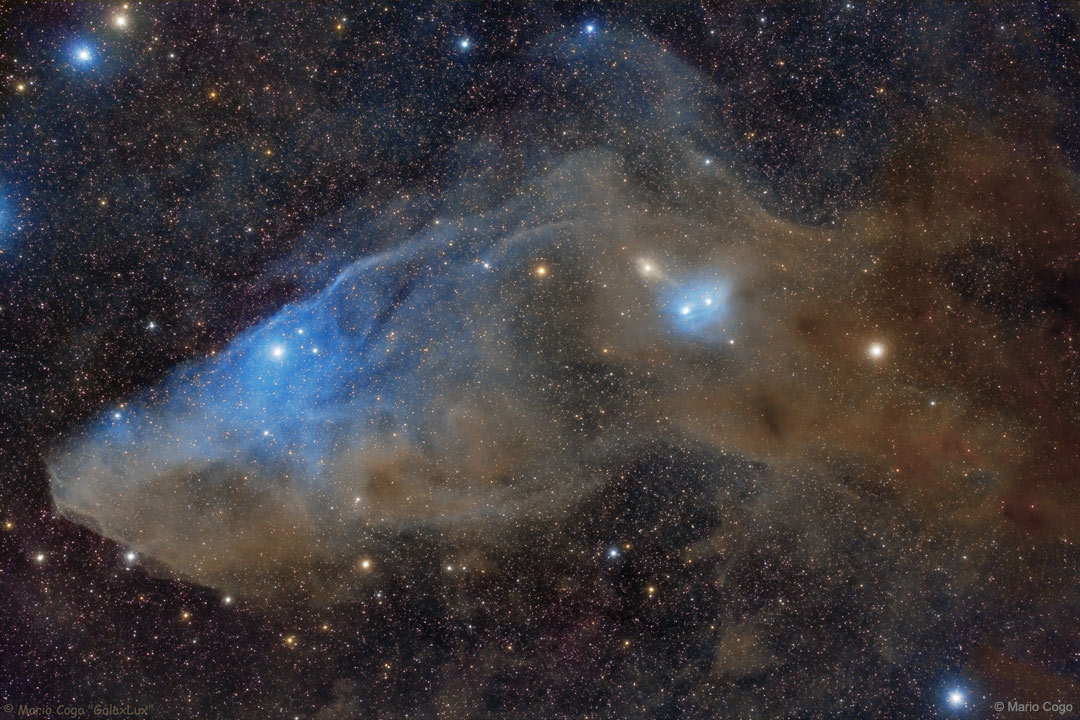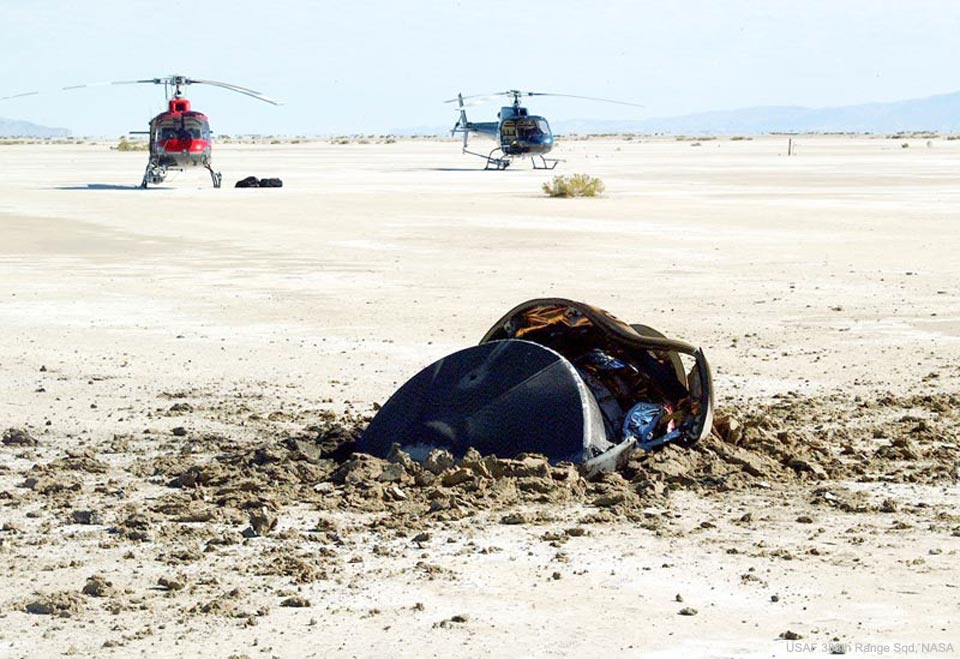Archives mensuelles : novembre 2018
IC 4592: The Blue Horsehead Reflection Nebula

Do you see the horse’s head? What you are seeing is not the famous Horsehead nebula toward Orion but rather a fainter nebula that only takes on a familiar form with deeper imaging. The main part of the here imaged molecular cloud complex is a reflection nebula cataloged as IC 4592. Reflection nebulas are actually made up of very fine dust that normally appears dark but can look quite blue when reflecting the light of energetic nearby stars. In this case, the source of much of the reflected light is a star at the eye of the horse. That star is part of Nu Scorpii, one of the brighter star systems toward the constellation of the Scorpion (Scorpius). A second reflection nebula dubbed IC 4601 is visible surrounding two stars to the right of the image center. via NASA https://ift.tt/2ztMlJp
Flying Saucer Crash Lands in Utah Desert

A flying saucer from outer space crash-landed in the Utah desert after being tracked by radar and chased by helicopters. The year was 2004, and no space aliens were involved. The saucer, pictured here, was the Genesis sample return capsule, part of a human-made robot Genesis spaceship launched in 2001 by NASA itself to study the Sun. The unexpectedly hard landing at over 300 kilometers per hour occurred because the parachutes did not open as planned. The Genesis mission had been orbiting the Sun collecting solar wind particles that are usually deflected away by Earth’s magnetic field. Despite the crash landing, many return samples remained in good enough condition to analyze. So far, Genesis-related discoveries include new details about the composition of the Sun and how the abundance of some types of elements differ across the Solar System. These results have provided intriguing clues into details of how the Sun and planets formed billions of years ago. via NASA https://ift.tt/2D1IdUr
Lunar LOVE

A more creative search by a group of amateur astronomers in the Ehime Prefecture of Shikoku Island, Japan has found lunar L-O-V-E. Their secret was an examination of this sharp image of the First Quarter Moon. To discover it for yourself you’ll need to look closely at details of the shadow and light along the terminator, the line between lunar night and day Created by the contrast of shadowed crater floors with sunlit walls and ridges, the letter V is not too hard to find near the center of the image. Letters L and E are a bit more challenging though, but can be teased out of shadow and light along the terminator at the bottom. Of course, on the cratered surface of the Moon the O is easy … . Moonwatchers on planet Earth should understand that like the famous lunar X, also seen here, these lunar letters are transient and only appear along the terminator in the hours around the Moon’s first quarter phase. So your next chance for lunar L-O-V-E is the first quarter Moon on November 15. via NASA https://ift.tt/2Op1UYp